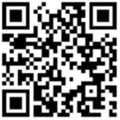How Ancient Calendars Used Geometry and Symbols like Eye Of Horus
Ancient civilizations developed sophisticated systems to measure and understand time, often intertwining geometry, symbolism, and cosmology. These systems served not only practical purposes but also reinforced cultural identity, religious beliefs, and the divine order of the universe. Central to many of these systems were symbols like the Eye of Horus, which embodied cosmic and temporal concepts, acting as metaphors that linked the heavens with human understanding.
Table of Contents
- Foundations of Ancient Calendars: Concepts of Time, Space, and Cosmology
- Geometry in the Construction and Calibration of Calendars
- The Symbolic Language of Time: The Eye of Horus as a Cosmic and Temporal Metaphor
- The Eye of Horus and Geometric Symbolism in Ancient Calendars
- Supporting Facts and Their Relevance to Calendar Systems
- The Role of Geometry and Symbols in Synchronizing Cultures and Religious Practices
- Non-Obvious Connections: Modern Interpretations and Continuing Legacy
- Conclusion: The Symbiotic Relationship of Geometry, Symbols, and Calendars in Ancient Civilizations
Foundations of Ancient Calendars: Concepts of Time, Space, and Cosmology
Ancient civilizations relied on lunar, solar, and stellar calendars, each rooted in observations of celestial cycles. The lunar calendar, based on the moon’s phases, was prominent in Mesopotamian and Chinese societies, while solar calendars, like the Egyptian and Roman systems, aligned with the sun’s annual journey. Stellar calendars tracked specific stars or constellations, often linked to agricultural or religious events.
To synchronize these calendars with the cosmos, ancient cultures employed geometry and spatial reasoning. For example, the Egyptians used the intersection of celestial paths with their architectural structures to align their calendar with solstices and equinoxes. Symbols and metaphors—such as the Eye of Horus—conveyed complex astronomical information, acting as mnemonic devices that encapsulated cosmic order and temporal cycles.
Geometry in the Construction and Calibration of Calendars
Geometry provided a precise language for measuring and dividing the sky. Ancient builders used geometric principles to design structures aligned with celestial events, ensuring that their calendars remained accurate over generations. The Rhind Mathematical Papyrus, an Egyptian mathematical text from around 1650 BCE, contains calculations involving areas and ratios that directly relate to astronomical measurements.
For instance, the division of the sky into segments or polygons facilitated the calculation of lunar months and solar years. Circles and segments represented the cyclical nature of celestial movements, with the circle symbolizing the eternal cycle of the cosmos. Geometric shapes like triangles, rectangles, and polygons served as tools for understanding the size, motion, and division of celestial bodies.
| Geometric Principle | Application in Calendars |
|---|---|
| Circle | Represents cyclical time; used in designing sundials and clock faces |
| Segments and Sectors | Divide the year into months and seasons based on celestial events |
| Polygons | Used in architectural alignments and symbolic representations of order |
The Symbolic Language of Time: The Eye of Horus as a Cosmic and Temporal Metaphor
The Eye of Horus originates from Egyptian mythology, where it symbolizes protection, royal power, and health. Mythologically, Horus’s eye was injured and later restored, symbolizing healing and renewal. Cosmologically, the Eye embodies the universe’s order—serving as a metaphor for the cyclical nature of time and the cosmos.
The eye’s segments—often depicted as fractal patterns—represent fractions of wholeness, reflecting the ancient understanding that time and space are interconnected and divisible. These segments symbolize the parts of a cycle—such as lunar months or solar years—and the process of renewal inherent in natural and cosmic rhythms.
“The Eye of Horus encapsulates the idea that understanding the universe involves perceiving its parts in relation to the whole—an enduring principle in both ancient and modern cosmology.”
The Eye of Horus and Geometric Symbolism in Ancient Calendars
The fractal segments of the Eye served as mnemonic devices, simplifying complex calendar calculations. For example, the six parts of the Eye could correspond to six lunar months or phases in a year, aiding scribes and astronomers in their computations.
Connecting the Eye’s symbolism to geometric calculations, ancient Egyptian scholars used measurements of segments and ratios to determine the length of lunar months and solar years. These geometric approximations allowed for more accurate prediction of celestial events, which were crucial for agriculture, navigation, and religious ceremonies.
A notable example is the way the Eye’s shape resembles a segmented circle divided into parts, paralleling how ancient astronomers divided the sky into sectors for observation and planning. Such symbols functioned as visual mnemonics, bridging abstract mathematical calculations with tangible symbols.
These symbolic tools helped unify diverse cultural groups through shared understanding of time, space, and cosmic order, exemplifying the deep connection between geometry, symbolism, and societal cohesion.
Supporting Facts and Their Relevance to Calendar Systems
- The Edwin Smith Papyrus: An ancient Egyptian medical text that includes detailed descriptions of eye surgery, indicating advanced anatomical and geometrical knowledge. This reflects how Egyptians applied geometric principles beyond architecture, influencing their understanding of the universe and time.
- Gold as the Flesh of the Gods: In Egyptian cosmology, gold’s divine nature reinforced its association with the sun and eternity, linking divine authority to timekeeping and celestial cycles.
- The Rhind Papyrus: Contains practical geometric calculations, such as areas and ratios, which facilitated precise calendar measurements, lunar calculations, and astronomical predictions. These calculations were essential for aligning religious festivals with celestial events.
The Role of Geometry and Symbols in Synchronizing Cultures and Religious Practices
Precise geometric constructions and symbols like the Eye of Horus reinforced societal and religious order, creating shared frameworks for understanding time. These symbols acted as universal language, uniting communities through common astronomical knowledge and ritual practices.
Calendar cycles intertwined with mythological symbols, such as the Eye, to reinforce divine authority and cosmic harmony. For example, Egyptian festivals aligned with lunar and solar cycles, often depicted using geometric and symbolic motifs to convey their sacred significance.
Trade, conquest, and cultural exchange facilitated the transmission of these ideas. As civilizations interacted, their shared reliance on geometric and symbolic principles fostered a unified approach to time and cosmology across regions.
Non-Obvious Connections: Modern Interpretations and Continuing Legacy
Many principles from ancient geometry and symbolism influence modern timekeeping, astronomy, and even game design. The RTG licensed slot exemplifies how symbols like the Eye of Horus have transcended their original context to become icons of knowledge, protection, and cyclical renewal in contemporary culture.
Today, geometric patterns underpin the design of astronomical instruments and calendars, while symbols reminiscent of the Eye are used in logos, art, and digital interfaces to evoke timeless themes of insight and order.
This enduring legacy demonstrates that the ancient pursuit of understanding time through geometry and symbols continues to inspire and inform modern science and culture.
Conclusion: The Symbiotic Relationship of Geometry, Symbols, and Calendars in Ancient Civilizations
In summary, ancient civilizations skillfully integrated geometric principles and symbolic language—exemplified by the Eye of Horus—to create accurate, meaningful calendar systems. These methods provided a framework for understanding cosmic order, facilitating societal cohesion and religious practice.
The legacy of these interconnected concepts persists today, highlighting the importance of interdisciplinary approaches in studying human history. Recognizing the deep connection between geometry, symbolism, and time enhances our appreciation of ancient ingenuity and its influence on modern science and culture.
By exploring these timeless principles, we gain insight into how humanity has sought to comprehend the universe—using symbols and geometry as universal tools for eternal understanding.






Leave a Reply
Want to join the discussion?Feel free to contribute!